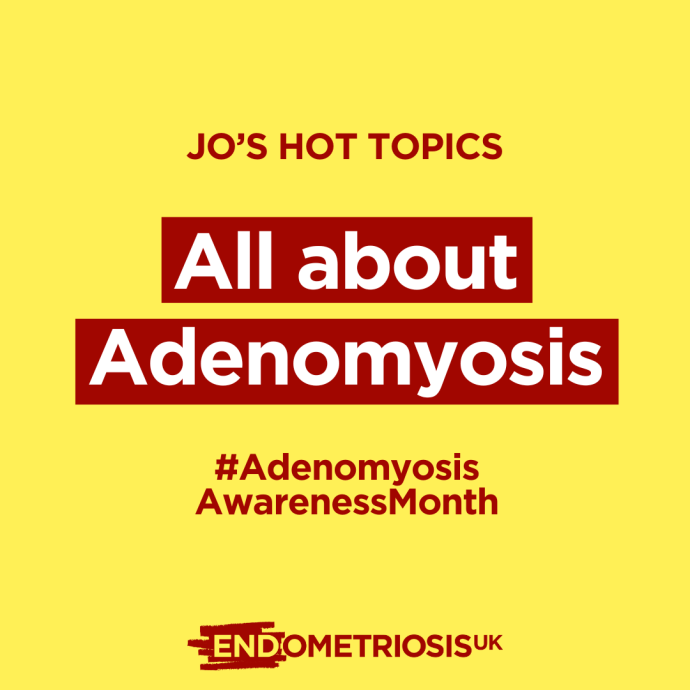What is it?
Adenomyosis (ad-uh-no-my-o-sis) is a condition where cells similar to the ones in the lining of the womb grow within the muscle of the womb wall. Adenomyosis also responds to the hormones in the menstrual cycle and affects 10% of women and those assigned female at birth. Adenomyosis can affect the whole of the womb (uterus) or part of the womb making it enlarged.
Adenomyosis is a separate condition to endometriosis but there are some similarities. Both conditions involve endometrial like cells, both are oestrogen dependant and the cause of each remains unknown. The difference is where the endometrial like cells grows, adenomyosis is in the womb wall (myometrium), and endometriosis is outside the womb.
Adenomyosis can cause troublesome symptoms, although some with adenomyosis may have not symptoms at all. It’s important to know that adenomyosis is not contagious, is not an infection and is not a cancer.
Can you have endometriosis and adenomyosis?
Endometriosis and adenomyosis are separate conditions. While it is quite common to have both, you can also have only endometriosis or only adenomyosis.
Common symptoms include:
- Painful periods, that interfere with everyday life
- Heavy periods
- Periods that last a long time
- Pain with sex
- Feelings of heaviness and pressure in the tummy
- Bloating
- Difficulties getting pregnant
How is it diagnosed?
An examination may identify an enlarged and/or painful womb, along with symptoms your healthcare practitioner should suspect adenomyosis.
Ultrasound scan or MRI (magnetic resonance imaging) of the pelvic organs may show an enlarged womb and thickening of the muscular layer of the womb.
How is it treated?
As with endometriosis, treatment and management options for adenomyosis are limited to surgery and symptom management options. Each individual is unique and while some options may work for some, they may not work for others. Always speak to your healthcare team about your unique needs.
Symptoms of pain can be managed with pain killers and anti-inflammatory medications and tranexamic acid may also help reduce bleeding during a period.
As adenomyosis is oestrogen dependant, it can be managed with hormone treatments such as, contraceptive pills, progestogens, intrauterine device (Mirena coil) and GnRH analogues (medications that cause a temporary medical menopause).
Adenomyosis can also be treated surgically, the options of surgery will depend on the location and severity of adenomyosis. If it’s affecting a small part of the womb, this area could be cut out similar to the removal of a fibroid. If adenomyosis is throughout the whole of the womb, then a hysterectomy maybe recommended. This should only be an option if there are no plans for pregnancy.
Uterine artery embolisation may be an alternative option for patients who do not wish to have hysterectomy and wish to preserve their fertility. The aim is to block the blood supply to the adenomyosis, which can cause it to shrink. This is less invasive than a hysterectomy, however, it is not curative.
Top tip: Keeping a pain and symptoms diary can help when speaking to your GP, and Endometriosis UK’s nurse led helpline is on hand to offer support if you need someone to talk to before your GP appointment.
More resources:
Adenomyosis Explained: Webinar with Dr Kenneth Ma
Adenomyosis at Work: Webinar in our Menstrual Health at Work series







